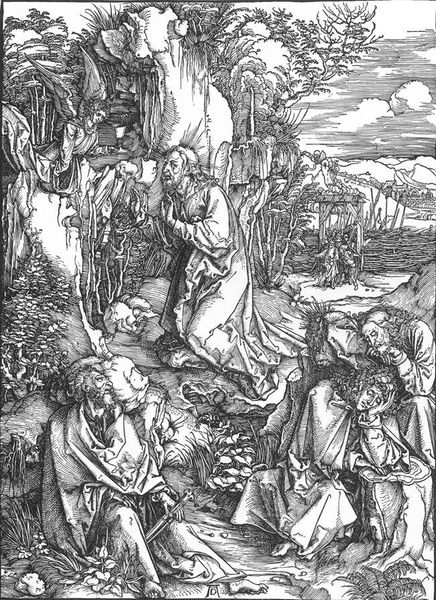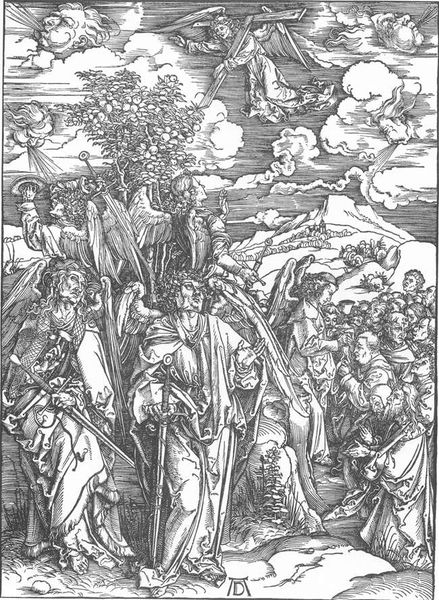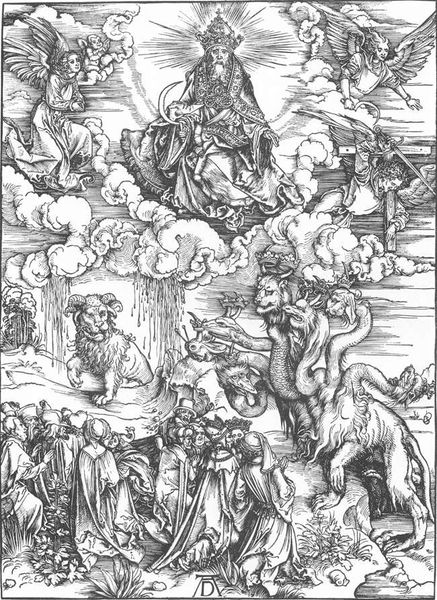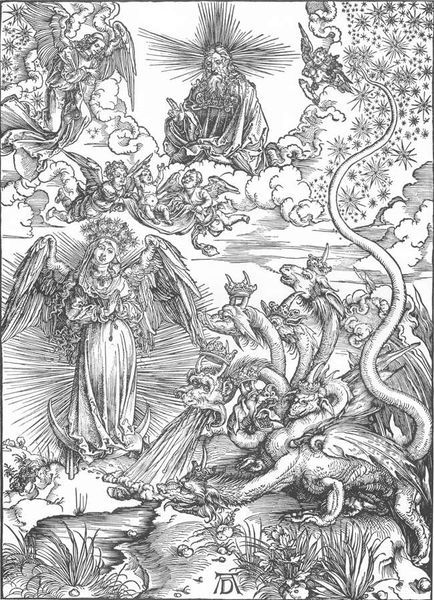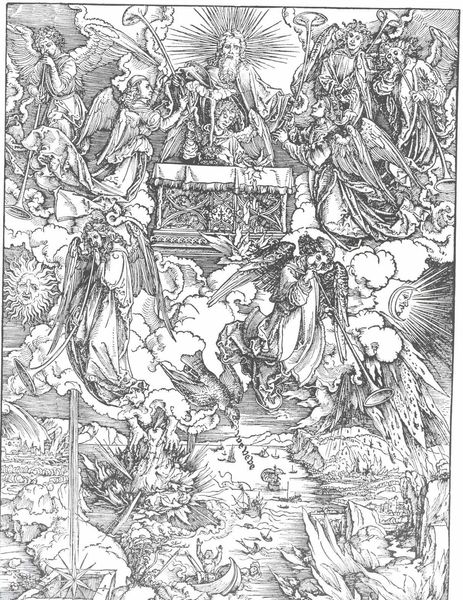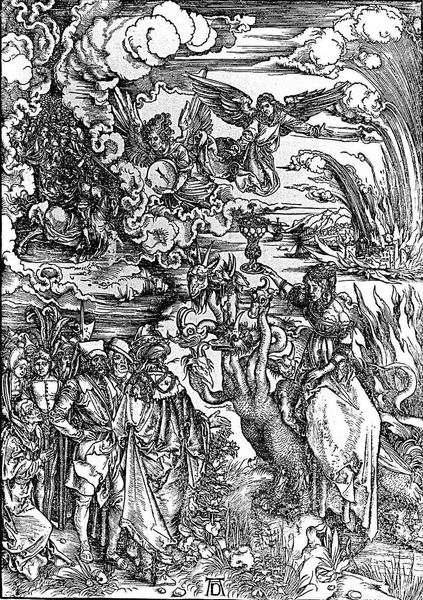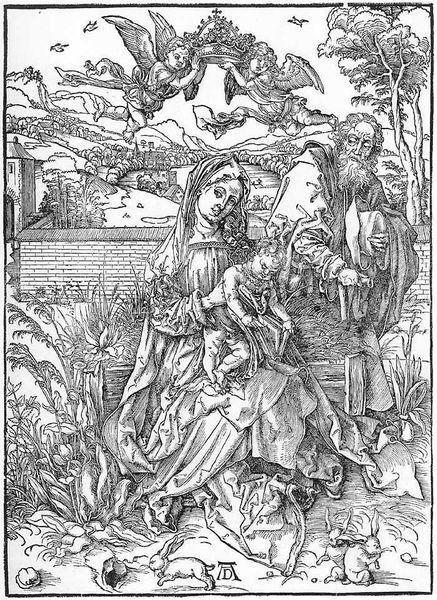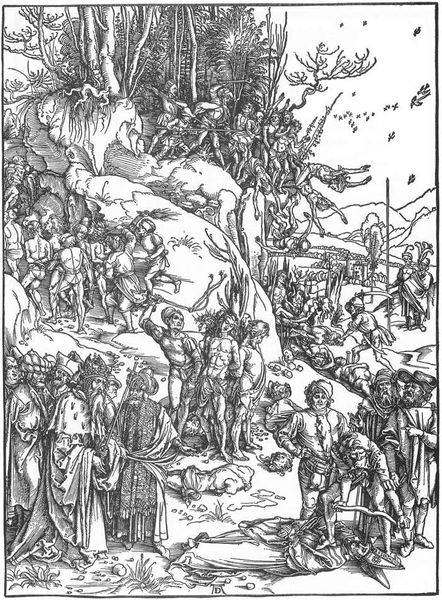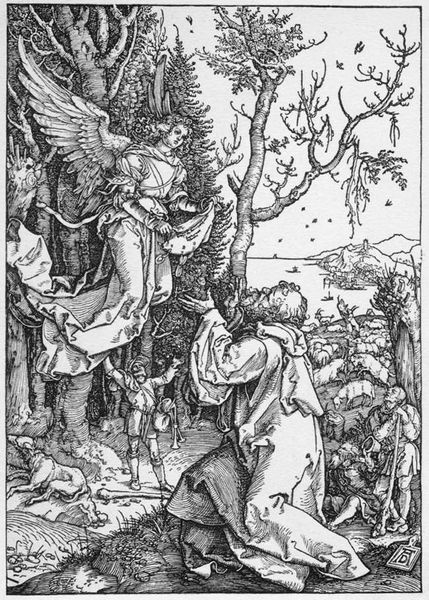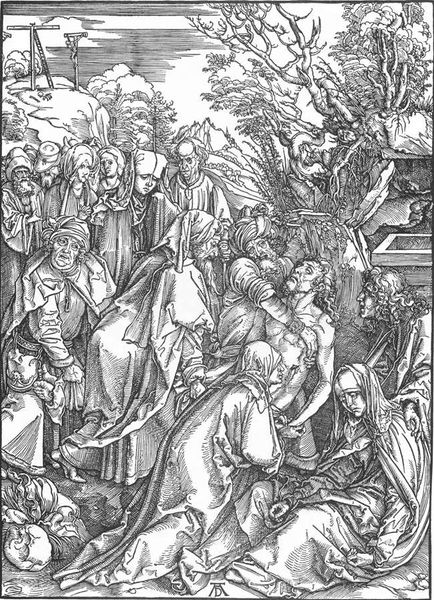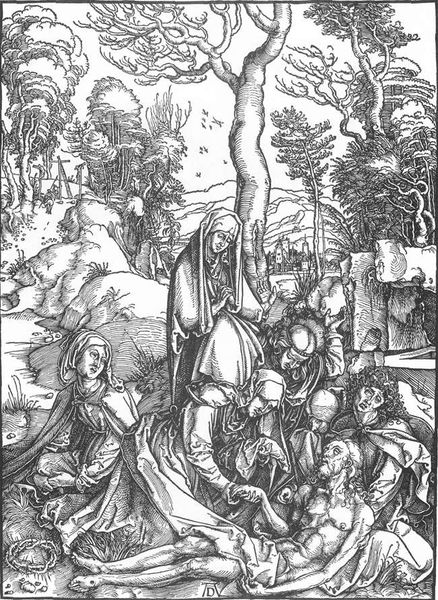
print, ink, woodcut, engraving
#
medieval
# print
#
pen illustration
#
landscape
#
figuration
#
ink line art
#
ink
#
woodcut
#
christianity
#
line
#
history-painting
#
northern-renaissance
#
engraving
#
angel
Copyright: Public domain
Curator: Look here at Dürer's "The Angel with the Key to the Bottomless Pit" from 1498. The work presents a complex narrative through intricate engraving, doesn’t it? Editor: It certainly does. The overwhelming feeling I get is one of contained chaos. Everything is so meticulously rendered, yet there's a wildness fighting to break through. The scale, particularly how figures interact, enhances the sense of an encroaching biblical apocalypse. Curator: Notice how Dürer masterfully employs line to delineate form and texture. The angel’s robes, for example, cascade with an almost sculptural quality, yet there's an obvious reliance on the craftsman’s skillful use of simple lines to deliver the whole aesthetic effect. And look at the city, seemingly calm, as the narrative foreground descends to hell. Editor: Precisely. Thinking of the material process, the controlled precision of the engraving suggests a highly specialized labor. What does it mean that this technology for mass production of images coincided with apocalyptic imagery? Consider the consumption: it's a dark portent readily available to many. The texture, almost abrasive in its detail, mimics the brutality it depicts, offering a visceral link to both creation and destruction through material. Curator: True, the textural contrast between the smooth angel and the grotesque demon accentuates the dichotomy between divine order and hellish disarray. This reflects Renaissance ideals and anxieties about sin, doesn't it? Consider also the semiotic weight of the key; it transcends its literal function, serving as a powerful symbol of control and impending doom. Editor: Yet, even that sense of control feels fragile here. Look closely, and there is some slippage. Some material excess on the borders of form, pushing the edge. The relentless detail makes the image teeter—a testament to the immense human labor invested. The material execution undercuts, even complicates, Dürer's supposed narrative and aesthetic authority, suggesting more earthly considerations. Curator: Perhaps that’s where the work gains its continued relevance. That it isn't a neat allegorical package, but something deeply troubled. Editor: Precisely, the craft gives the image its strength to provoke us centuries after its production.
Comments
No comments
Be the first to comment and join the conversation on the ultimate creative platform.
